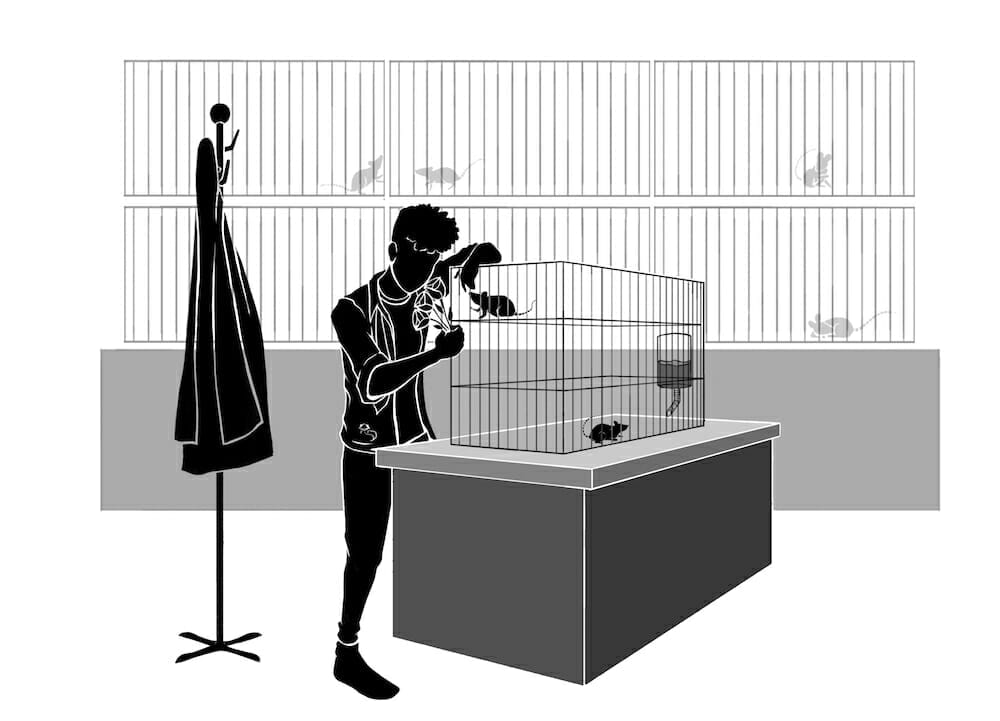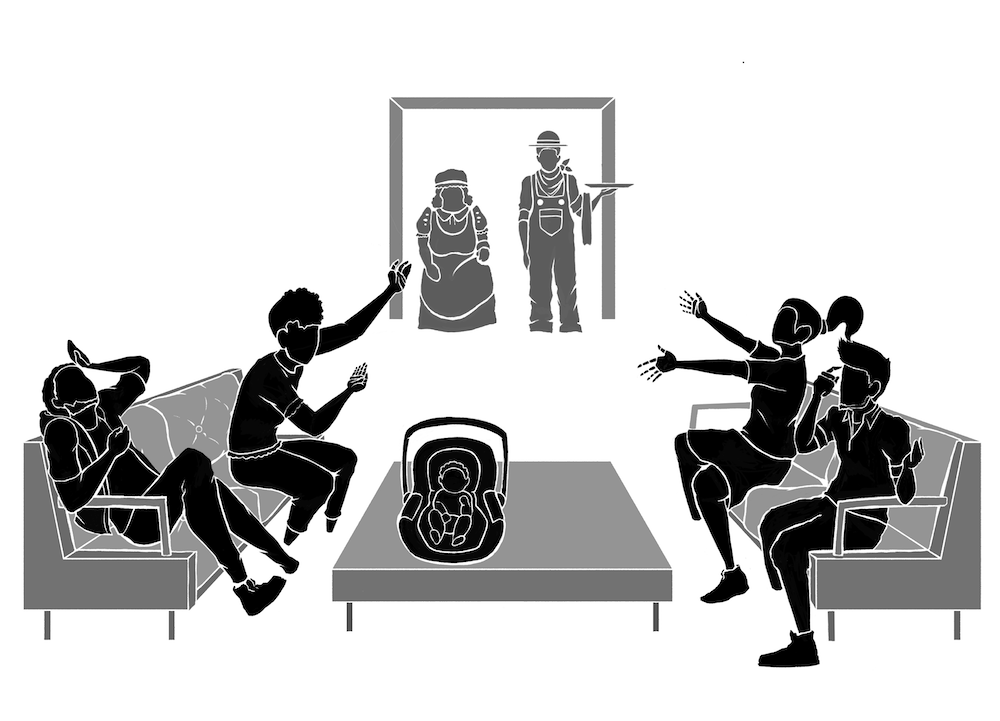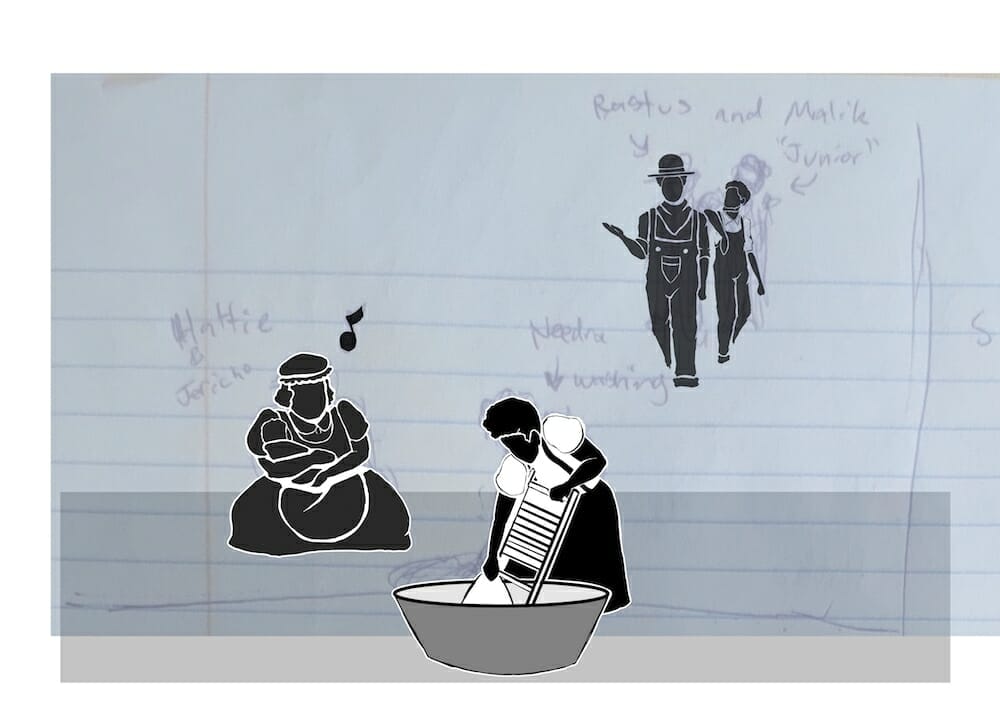Click here to read more Picture This Post 16th Street Theater stories.
If you could erase the parts of yourself you don’t like—and not just the ones your aware of, but all of them—would you?
And if you could make and fine-tune another person down to their code, what would you make?
Would you consciously give an artificial person a specific human heritage—or deny them one?
Those are the questions raised in Rastus and Hattie, a newly adapted audioplay now streaming from the 16th St Theater. The play by Lisa Langford features such conceits as time travel, epigenetic engineering, and sentient robots, but this is science-fiction with a focus on race, and what exactly we mean when we talk about heritage.
Exploring the Ability to Engineer Sentient Minds
Needra (Krystel McNeil) has just been informed that her research is racist. As a black woman who has just been granted a fellowship based on said research, this naturally irks her, and it’s really just her recommendation for future studies that her supervisor objects to. Needra discovered that she could make fear of magnolias into a hereditary trait in rats, and that once established, she could remove it. She speculates this would have benefits for humans, and particularly Black women, who suffer numerous stress-induced health problems that she postulates are due to generational trauma. But really, Needra has never been good at talking about race, as we see when she visits her White friend, Marlene (Kate Black-Spence) to dedicate Marlene as her daughter’s godmother. Marlene has recently come into possession of two robots designed to look, speak like, and fulfill the function of nineteenth century Black slaves. She sees nothing wrong with this, and never imagined that anyone else would, either.
Rastus and Hattie, as the robots are called, were not intended to be self-aware. But since their tasks, however underappreciated, do require human-level intelligence, they’re equipped with learning abilities and they retain the memories of earlier robot prototypes whose parts were reused in their construction. It is not lost on Needra that this is a more straight-forward version of the sort of thing she’s researching. So when she and her husband, Malik (David Goodloe), set out for their new home in Alabama, what else can she do but take Rastus and Hattie with her? But Needra wasn’t so fond on moving to Alabama, either, and her fears are soon vindicated beyond anything she could have imagined. With Marlene and her boyfriend David (Ryan Kitley) in hot pursuit, it turns out that Rastus and Hattie might be better equipped for certain types of problems than their rescuers.
16th St Theater Revives the Radio Play Format
Langford’s science-fiction story is more focused on the implications of emerging technology than adventure and spectacle. Admittedly, this is partly because it was written for the stage and reworked during the pandemic to be presented through audio. But it does have some visual panache in the form of Roy Thomas’s shadow puppet-like illustrations, which accompany the recording on the theater’s Vimeo channel. For this reviewer, the throwback radio-play style seemed felicitous; the play was partly inspired by the Black-presenting robots exhibited by Westinghouse in the early 1930s, and the characters Rastus and Hattie were created around that time and lay dormant until Marlene and David activated them. In this context, they don’t seem so alien, after all.
Director Lanise Antoine Shelley led the seven-person cast through their recordings, integrating them with the low-key sound design by Olanrewaju Adewole. With their voices as the only tool for conveying their characters, the differences between the robots and flesh-people are even more elided. Their regional origins, however, are not, and another of the play’s themes is the conflict between Needra and her Alabama-native husband over what home and authenticity even mean. Is pain too enmeshed in other emotions to be separable, or even identifiable, without causing more harm? That the play is almost entirely reduced to dialogue makes the characters more archetypical, but Langford is still highly specific about their circumstances. And in that, many audience members during the post-show discussion, offered through Zoom on Thursdays and Fridays, felt a strong personal connection. Needra finds her own answers to the play’s questions, but the audience is left to wonder.
RECOMMENDED
Nominate this for The Picture This Post BEST OF 2020???
Click Readers' Choice
Vote Securely! Vote Privately! And Make Your Vote Count-- as all voting should be!!
Click here to read more Picture This Post 16th Street Theater stories.
RASTUS AND HATTIE
Written by LISA LANGFORD
Audio play adapted and directed by LANISE ANTOINE SHELLEY
VOICEOVER Kate Black-Spence, Jasmine Bracey, David Goodloe, Daniel Houle, Colin Jones, Ryan Kitley and Krystel McNeil as Needra
SOUND DESIGNER / AUDIO ENGINEER Olanrewaju Adewole
POST-PRODUCTION AUDIO ENGINEER Nathan Cox-Reed
ILLUSTRATOR Roy Thomas
VIDEO EDITOR Peter Marston Sullivan
DRAMATURG Mildred Marie Langford
RECORDED at Chicago’s Classick Studios
Photos courtesy of 16th Street Theater
RUNNING TIME: 90 minutes
When:
Streaming September 24 - January 31, 2021
Thursdays & Fridays @ 7:00
Saturdays @ 4:00
Where:
Online at the 16th Street Theater website.
Tickets:
$10+ (with discounts for students)
To purchase tickets visit the 16th Street Theater website or call (708) 795-6704 x107

About the Author: Jacob Davis
Jacob Davis has lived in Chicago since 2014 when he started writing articles about theatre, opera, and dance for a number of review websites. He is a graduate of the University of Illinois at Urbana-Champaign’s Department of Theatre, where he specialized in the history of modernist dramatic literature and criticism. While there, he interned as a dramaturge for Dance Heginbotham developing concepts for new dance pieces. His professional work includes developing the original jazz performance piece The Blues Ain’t a Color with Denise LaGrassa, which played at Theater Wit. He has also written promotional materials for theatre companies including Silk Road Rising.
Click here to find more Picture This Post articles by Jacob Davis.






Nominated for Picture This Post BEST OF 2020